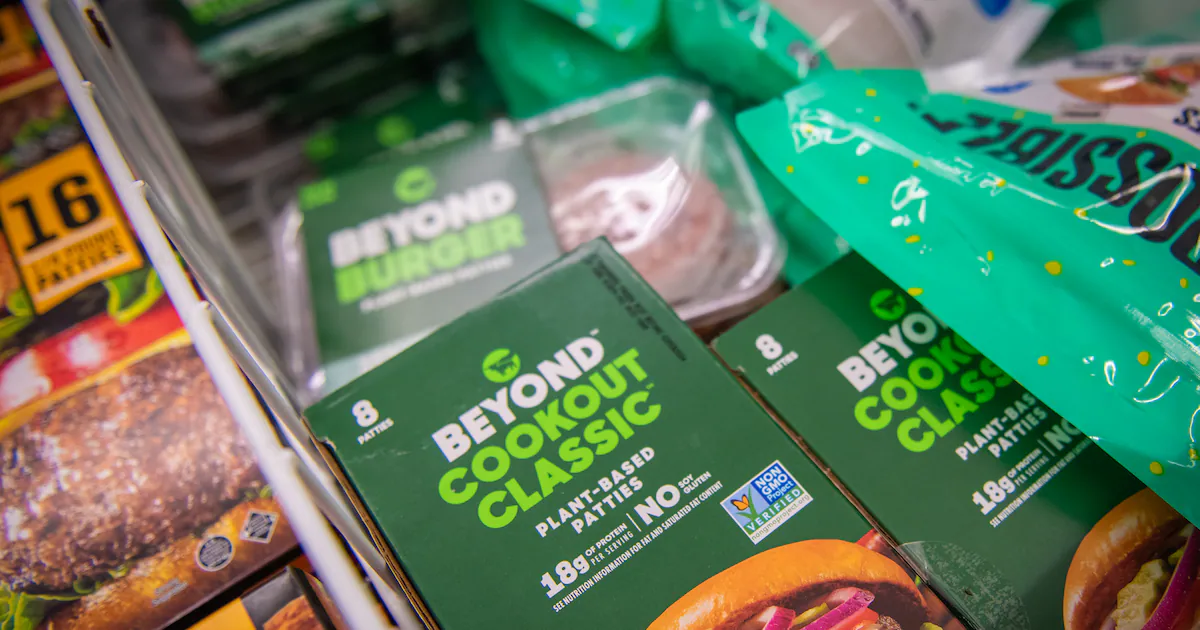
When Danone SA set out to create a high-protein yogurt, it wanted to make sure that each spoonful was loaded with as much protein as possible, while keeping sugar levels low and the texture smooth.
To do that, it developed a process for its Oikos Pro brand that adjusted fermentation and temperature to avoid grittiness and separation, said Susan Zaripheh, Danone’s chief research and innovation leader in North America.
Now, the industry is working to make sure that process doesn’t get Danone’s yogurt and other products defined as ultra-processed food, in Health Secretary Robert F. Kennedy Jr.’s push against what he considers one of the root causes of chronic disease.
“We don’t want to see a definition for ultra-processed food that demonizes nutrient-dense foods like dairy products,” said Roberta Wagner, senior vice president of regulatory affairs at the International Dairy Foods Association, which is among the groups lobbying the White House and federal agencies on this issue.
Kennedy said last week at a Trump administration event unveiling recommendations to improve children’s health that he wanted a federal definition and a front-of-package label for ultra-processed by the end of this year. He hasn’t targeted specific items yet, but companies are pushing back and lobbying to keep their products from getting branded as such because it would likely hurt sales. The administration could also recommend eating less highly-processed foods in the five-year update to federal dietary guidelines expected later this year. The recommendations impact numerous programs, including school meals.
Just in the yogurt aisle alone, some products could escape without a label, while others could be grouped with hot dogs and cookies. That’s a big worry for the $2.6 trillion food industry because these healthier items have been a bright spot as consumers have pulled away from packaged food and sparked trends, such as the surge in demand for high-protein options. Greek yogurt, which has more protein than other varieties, is now in nearly 74% of U.S. households, up two percentage points in the last year, according to NielsenIQ.
Adding to the concern is that more than half of all calories consumed by Americans are considered ultra-processed by the NOVA system, the most commonly-used standards developed outside the U.S.
“We are focusing narrowly on nutrition,” said Kennedy, who has said highly-processed food is poisoning Americans.
In response to a request for comment for this story, a spokesperson for the Department of Health and Human Services said in a statement that “Americans deserve to know what’s in their food, so they can make informed choices for themselves and their families.”
So far, the administration largely hasn’t opted to unleash new regulations on the food industry, urging it to voluntarily strip out food dyes, for example. Crafting a definition of ultra-processed food could stretch out over years, giving big food companies time to influence the process, as they have successfully done for decades.
Rena Awada, a 43-year-old cooking blogger in Michigan, is emblematic of a shift toward healthier options. She looks for whole, unprocessed foods when she’s developing recipes or feeding her five kids. To boost protein levels, she might add Greek yogurt. But navigating a healthy lifestyle could become a bit more complicated for Awada and others in the future.
“I do try to limit the ultra-processed foods,” Awada said. Sometimes she opts for convenience, but always checks ingredient labels, she said. “I do like to know what I’m feeding my kids and what I’m using in my recipes.”
The debate over what should be considered ultra-processed food, or UPF, gets ratcheted up around foods engineered to deliver health benefits, such as higher protein or lowered sugar. That could ensnare a wide range of products, including protein powder, salad dressings, whole-grain breads with preservatives to extend shelf life and plant-based meat options, like those from Beyond Meat Inc.
John Thomas, a 33-year-old vegan bodybuilder based in Tampa, Florida, said he views some processed options, such as textured vegetable protein, as healthier than junk food.
“I view that as still a relatively healthy food,” he said. “It’s processed – but it’s not an Oreo.”
The Trump administration first floated the idea of defining ultra-processed food in July and a fierce lobbying fight is under way over whether a federal definition should focus on ingredients, processing or a combination. Some argue it should center on how much of a food is made up of beneficial nutrients.
“If you create a definition of ultra-processed food that doesn’t consider nutrient density, then you’re going to be grouping dairy products like cheese, flavored yogurts, even flavored milk, with things like soda and candy,” said Wagner, the senior vice president from the International Dairy Foods Association.
Food companies that make minimally-processed foods and don’t rely on synthetic ingredients see an opportunity. Earlier this year, the Food Integrity Collective, a nonprofit, began the “Non-UPF Verified” pilot program, working with packaged goods companies, including Spindrift sparkling water, to develop a standard that will establish which products get a label declaring them not ultra-processed.
The group, which previously launched the “Non-GMO Project” butterfly label, said it has more than 200 companies on its waitlist for verification once the standard is published this fall. Jon Silverman, a senior vice president at Spindrift, said the company has always used real fruit in its beverages, “so this program provides a clear way to highlight that difference for consumers.”
The NOVA system, developed in Brazil, separates food into four buckets: unprocessed or minimally processed foods like fruits and vegetables; processed culinary ingredients such as butter or sugar; processed foods made through methods such as fermentation or canning, and finally ultra-processed foods, including hot dogs and frozen pizza.
Former FDA Commissioner David Kessler filed a petition in August urging the FDA to bypass a definition and instead effectively roll back usage of processed, refined carbohydrates in the U.S. food supply by no longer considering them “generally regarded as safe.” For example, his petition would target high-fructose corn syrup, flours and starches used in industrial food processing.
That could be a much faster way to kick a lot of ultra-processed food out of U.S. grocery stores than undergoing a typically years-long regulatory process that would be swayed by industry lobbying, said Jerold Mande, a former senior USDA official and now the chief executive of Nourish Science, a nonprofit focused on nutrition.
In July when the U.S. government began considering creating a definition for processed food, it acknowledged the challenges that the food industry is worried about.
“Foods considered to be ultra-processed may also include foods such as whole grain products or yogurt, which are known to have beneficial effects on health,” U.S. agencies said in materials released at the time. “It is important therefore to consider unintended consequences of an overly inclusive definition of UPFs that could discourage intake of potentially beneficial foods.”



